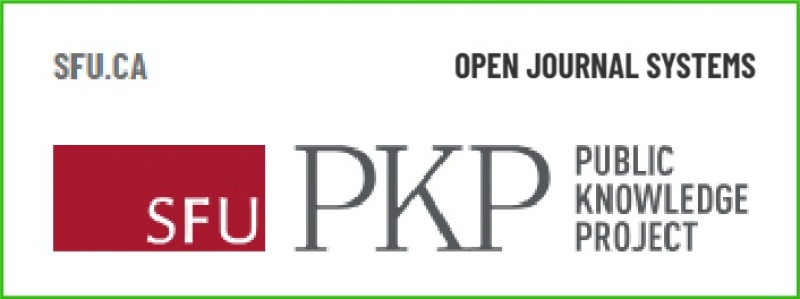Keanekaragaman Jenis Vegetasi Riparian pada Daerah Hulu dan Hilir Sungai Noemuti Kabupaten Timor Tengah Utara
DOI:
https://doi.org/10.36312/biocaster.v5i3.415Keywords:
Anthropogenic Disturbance, Upstream and Downstream of the River, Importance Value Index, Diversity, Riparian VegetationAbstract
Riparian ecosystem is a transition zone between land and water bodies that plays an important role in maintaining environmental balance, preventing erosion, filtering pollutants, and providing habitat for biodiversity. This study aims to analyze the diversity of riparian vegetation types in the upstream and downstream of the Noemuti River. The method used is the plot method with a size of 20m x 20m with a total of 24 plots. The results of the analysis showed that there were significant differences in the composition and structure of riparian vegetation between the upstream and downstream of the Noemuti River. In the upstream area, 31 plant species were found belonging to 20 families with a total of 751 individuals, while in the downstream 23 species were found from 16 families with a total of 831 individuals. Dominant species in the upstream include Tectona grandis (262 individuals), Senna siamea (66 individuals), and Leucaena leucocephala (53 individuals), while in the downstream it is dominated by Gliricidia sepium (309 individuals), Vachellia nilotica (131 individuals), and Tectona grandis (125 individuals). The highest Importance Value Index (IVI) in the upstream was shown by Tectona grandis, each of 80.88% (tree), 116.43% (pole), 63.94% (sapling), and 37.57% (seedling). In the downstream, Gliricidia sepium became the most dominant species with IVI of 66.02% (tree), 108.62% (pole), 63.48% (sapling), and 46.05% (seedling). The invasive species Chromolaena odorata also showed significant dominance in the seedling strata with an INP of 39.98% in the upstream and 59.00% in the downstream. The Shannon-Wiener diversity index (Hʹ) in the upstream was recorded at 2.42 and in the downstream at 2.05, both of which are included in the moderate diversity category. The species richness index (R) was higher in the upstream (4.38) compared to the downstream (3.25), while the evenness index (E) was recorded at 0.70 in the upstream and 0.65 in the downstream.
Downloads
References
Agustina, S., Maulana, Y., & Zahara, N. (2022). Analisis Vegetasi Jenis Pohon di Kawasan Pegunungan Desa Iboih Kecamatan Sukakarya Kota Sabang. In Prosiding Seminar Nasional Biologi, Teknologi dan Kependidikan (pp. 101-105). Banda Aceh, Indonesia: Universitas Islam Negeri Ar-Raniry.
Bental, W. P., Siahaan, R., & Maabuat, P. V. (2017). Keanekaragaman Vegetasi Riparian Sungai Polimaan, Minahasa Selatan - Sulawesi Utara (Riparian Vegetation Diversity of Polimaan River, South Minahasa- Sulawesi Utara). Jurnal Bios Logos, 7(1), 27-31. https://doi.org/10.35799/jbl.7.1.2017.16254
Cao, Y., & Natuhara, Y. (2020). Effect of Anthropogenic Disturbance on Floristic Homogennization in the Floodplain Landscape: Insights from the Taxonomic and Functional Perspectives. Forest, 11(10), 1-22. https://doi.org/10.3390/f11101036
Chazdon, R. L., Broadbent, E. N., Rozendaal, D. M. A., Bongers, F., Zambrano, A. M. A., Aide, T. M., & Poorter, L. (2016). Carbon Sequestration Potential of Second-Growth Forest Regeneration in the Latin American Tropics. Science Advances, 2(5), 1-10. https://doi.org/10.1126/sciadv.15016
Darlis, V. V., Bakara, J. P., Mardhiansyah, M., & Pebriandi, P. (2024). Pemanfaatan Ekstrak Daun Sirsak (Annona muricata) sebagai Pestisida Nabati terhadap Pengendalian Hama Kutu Putih (Paracoccus marginatus) pada Pembibitan Akasia (Acacia crassicarpa). Jurnal Silvikultur Tropika, 15(1), 31-35. https://doi.org/10.29244/j-siltrop.15.01.31-35
Fikriyya, N., Putri, A. K., & Silalahi, M. (2023). Keanekaragaman Vegetasi Riparian Sungai Banjaran di Kabupaten Banyumas, Jawa Tengah. Buletin Kebun Raya, 26(3), 126-139. https://doi.org/10.55981/bkr.2023.2443
Gupta, R., & Sharma, L. (2021). Modelling the Growth Response to Climate Change and Management of Tectona grandis L. f. Using the 3 PGmix Model. Annals of Forest Science, 78(1), 83-96. https://doi.org/10.1007/s13595-021-01102-y
Hoppenreijs, J. H. T. (2024). Rooting for Riparian Vegetation: Processes Underlying Community Composition in Boreal Ecosystems. Karlstad: Karlstad University.
Hoppenreijs, J. H. T., Eckstein, R. L., & Lind, L. (2022). Pressure on Boreal Riparian Vegetation: A Literature Review. Frontiers in Ecology and Evolution, 9(1), 1-9. https://doi.org/10.3389/fevo.2021.806130
Kusmana, C. (2017). Metode Survey dan Interpretasi Data Vegetasi. Bogor: IPB Press.
Lestari, F., & Kusmana, C. (2015). Pengaruh Sampah terhadap Kandungan Klorofil Daun dan Regenerasi Hutan Mangrove di Kawasan Hutan Lindung Angke Kapuk, Jakarta. Bonorowo Wetlands, 5(2), 77-84. https://doi.org/10.13057/bonorowo/w050203
Lestari, M., Mira, M., Prasetyo, S. Y. J., & Fibriani, C. (2021). Analisis Daerah Rawan Banjir pada Daerah Aliran Sungai Tuntang Menggunakan Skoring dan Inverse Distance Weighted. Indonesian Journal of Computing and Modeling, 4(1), 1-9. https://doi.org/10.24246/icm.v4i1.4615
Lisna, L., Malik, A., & Toknok, B. (2017). Potensi Vegetasi Hutan Mangrove di Wilayah Pesisir Pantai Desa Khatulistiwa Kecamatan Tinombo Selatan Kabupaten Parigi Moutong. Warta Rimba, 5(1), 63-70.
Mashudi, M., Susanto, M., & Baskorowati, L. (2016). Potensi Hutan Tanaman Mahoni (Swietenia macrophylla King) dalam Pengendalian Limpasan dan Erosi. Jurnal Manusia dan Lingkungan, 23(2), 259-265. https://doi.org/10.22146/jml.18798
Maulani, P. I., Hidayat, M., & Amin, N. (2022). Struktur Vegetasi Riparian di Kawasan Sungai Brayeun Kecamatan Leupung Aceh Besar. In Prosiding Seminar Nasional Biotik (pp. 1-12). Banda Aceh, Indonesia: Universitas Islam Negeri Ar-Raniry.
Morgan, D., Strindberg, S., Winston, W., Stephens, C. R., Traub, C., Ayini, C. E., & Sanz, C. M. (2019). Impacts of Selective Logging and Associated Anthropogenic Disturbance on Intact Forest Landscapes and Apes of Northern Congo. Frontiers in Forests and Global Change, 2(1), 1-13. https://doi.org/10.3389/ffgc.2019.00028
Naharuddin, N. (2017). Komposisi dan Struktur Vegetasi dalam Potensinya sebagai Parameter Hidrologi dan Erosi. Jurnal Hutan Tropis, 5(2), 134-142. http://dx.doi.org/10.20527/jht.v5i2.4367
Noukeu, N. A., Priso, R. J., Dibong, S. D., Ndongo, D., Kono, L., & Essono, D. (2019). Floritic Diversity of Receiving Environments Polluted by Effuent from Agri-Food Industries. Heliyon, 5(11), 1-11. https://doi.org/10.1016/j.heliyon.2019.e02747
Nurika, F. B. P., Wiryani, E., & Jumari, J. (2019). Keanekaragaman Vegetasi Riparian Sungai Panjang Bagian Hilir di Kecamatan Ambarawa Kabupaten Semarang. Jurnal Akademika Biologi, 8(1), 30-34.
Nursanti, N., & Adriadi, A. (2019). Study of Basic Vegetation Composition in Sultan Thaha Saifuddin Grand Forest Park Area. Media Konservasi, 24(1), 85-93. https://doi.org/10.29244/medkon.24.1.85-93
Rahmania, F. N., & Irawanto, R. (2022). Inventarisasi Keanekaragaman Jenis Vegetasi Riparian Bagian Hulu Sungai Welang Jawa Timur. In Prosiding Seminar Nasional Pendidikan Biologi dan Saintek (pp. 290-298). Surakarta, Indonesia: Universitas Muhammadiyah Surakarta.
Ristawan, M. D., Murningsih, M., & Jumari, J. (2021). Keanekaragaman Jenis Penyusun Vegetasi Riparian Bagian Hulu Sungai Panjang Kabupaten Semarang. Jurnal Akademika Biologi, 10(1), 1-5.
Rudin, N. A., Damayanti, F. N., Sawajir, M. U., Zacharias, D. K. N., Tasik, M. S., & Donuisang, R. D. (2020). Potensi Keanekaragaman Vegetasi Pohon untuk Konservasi Air di Desa Kolobolon, Kecamatan Lobalain, Rote Ndao, Nusa Tenggara Timur. In Prosiding Seminar Nasional Biologi di Era Pandemi COVID-19 (pp. 191-198). Makassar, Indonesia: UIN Alauddin Makassar.
Samamba, E., Chamshama, S. A. O., & Mwambusi, J. N. (2024). Growth, Yield, and Stem Quality of Tectona grandis Grown with Different Spacings at Longuza Forest Plantation, Tanzania. Jurnal Manajemen Hutan Tropika, 30(1), 138-143. https: doi.org//10.7226/jtfm.30.1.138
Singh, R., Tiwari, A. K., & Singh, G. S. (2021). Managing Riparian Zones for River Health Improvement: An Integrated Approach. Landscape and Ecological Engineering, 17(1), 195-223. https://doi.org/10.1007/s11355-021-00482-5
Sofiana, L., Nofisulastri, N., & Safnowandi, S. (2023). Pola Distribusi Siput Air (Gastropoda) sebagai Bioindikator Pencemaran Air di Sungai Unus Kota Mataram dalam Upaya Pengembangan Modul Ekologi. Biocaster : Jurnal Kajian Biologi, 3(3), 133-158. https://doi.org/10.36312/biocaster.v3i3.191
Solehah, S., & Fitrihidajati, H. (2021). Keanekaragaman Tumbuhan Akuatik di Sungai Sadar Mojokerto sebagai Indikator Logam Berat Pb. LenteraBio : Berkala Ilmiah Biologi, 10(2), 165-175. https://doi.org/10.26740/lenterabio.v10n2.p165-175
Sosilawaty, S., Rizal, M., & Saragih, N. F. (2020). Keanekaragaman dan Karakteristik Pohon Bersarang Orangutan (Pongo pygmaeus wurmbii) di Suaka Margasatwa Lamandau Kalimantan Tengah. Bonita : Jurnal Penelitian Kehutanan, 2(1), 1-10. https://doi.org/10.55285/bonita.v2i1.429
Sulasutri, S., Moulana, R., & Basri, H. (2021). Vegetasi Riparian dan Kesuburan Tanah di Sub DAS Senggapa, Rainforest Lodge Kedah. Jurnal Ilmiah Mahasiswa Pertanian, 6(4), 990-999. https://doi.org/10.17969/jimfp.v6i4.18361
Tabacchi, E., Lambs, L., Guilloy, H., Tabacchi, A. M. P., Muller, E., & Decamps, H. (2018). Impacts of Riparian Vegetation on Hydrological Processes. Hydrological Processes, 14(1), 2959-2976. https://doi.org/10.1002/1099-1085(200011/12)14:16/173.3.CO;2-2
Tjitrosoedirdjo, S., Setyawati, T., Sunardi, S., Subiakto, A., Irianto, R. S. B., & Garsetiasih, R. (2016). Pedoman Analisis Risiko Tumbuhan Asing Invasif (Post Border). Jakarta: FORIS Indonesia, Pusat Penelitian dan Pengembangan Hutan, Kementerian Lingkungan Hidup dan Kehutanan Republik Indonesia.
Widiyanto, A., & Sudomo, A. (2017). Pengaruh Pemberian Pangkasan Gamal (Gliricidia sepium) terhadap Hara Tanah pada Sistem Monokultur dan Agroforestry. In Seminar Nasional Hasil Penelitian Agribisnis 1 FP UNIGAL (pp. 44-52). Ciamis, Indonesia: Universitas Galuh.
Yudhistian, Y., Nuraida, D., Sari, S. N., & Sholikah, F. (2025). The Diversity Index and Importance Value of Herbaceous Vegetation in the Joko Tarub Forest Tuban. Jurnal Penelitian Pendidikan IPA, 11(4), 936-944. https://doi.org/10.29303/jppipa.v11i4.10974
Zheng, J., Wang, L., & Li, C. (2023). Trends and Hotspots in Riparian Restoration Research: A Global Bibliometric Analysis during 1990-2022. Forests, 14(1), 1-15. https://doi.org/10.3390/f14112205
Downloads
Published
How to Cite
Issue
Section
License
Copyright (c) 2025 Vinsensia Yosefa Messah, Remigius Binsasi, Yeremias Binsasi, & Polikarpia Wilhelmina Bani

This work is licensed under a Creative Commons Attribution-ShareAlike 4.0 International License.
-
Attribution — You must give appropriate credit, provide a link to the license, and indicate if changes were made. You may do so in any reasonable manner, but not in any way that suggests the licensor endorses you or your use.
-
ShareAlike — If you remix, transform, or build upon the material, you must distribute your contributions under the same license as the original.











































